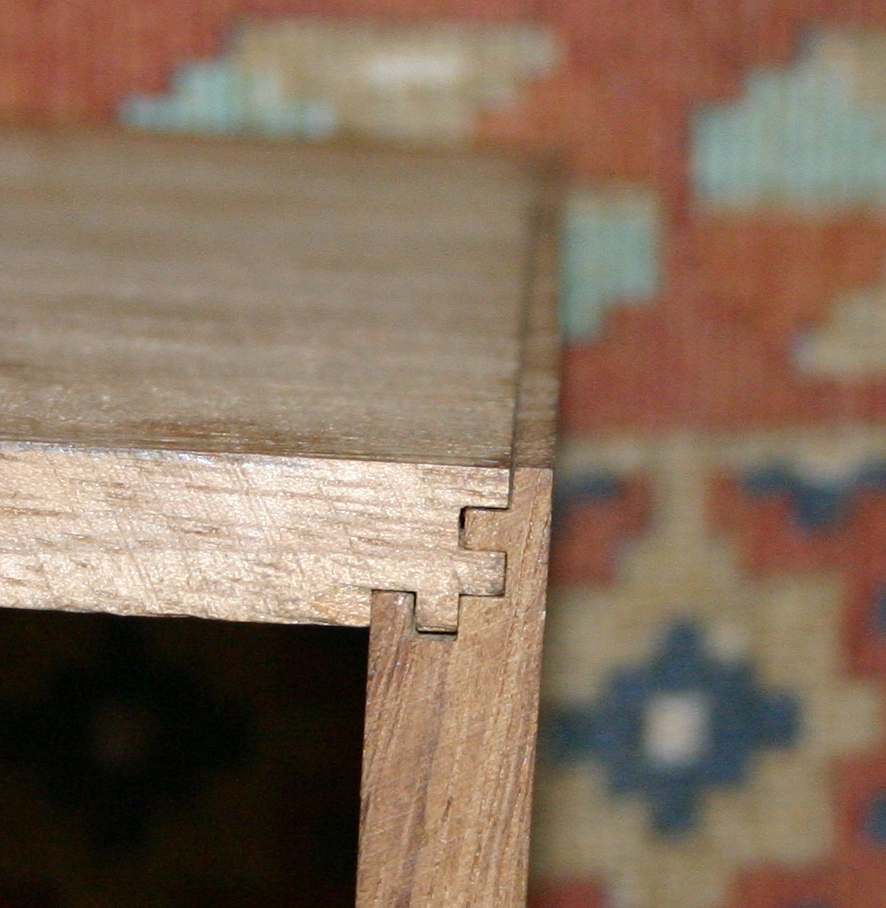
| WWT Shows | CLICK TO: Join and Support Internet Horology Club 185™ | IHC185™ Forums |

|
• Check Out Our... • • TWO Book Offer! • |
Welcome Aboard IHC185™  Internet Horology Club 185
Internet Horology Club 185  IHC185™ Discussion Site Main Page
IHC185™ Discussion Site Main Page  Horological Discussions, Questions and Answers
Horological Discussions, Questions and Answers  Military Timepiece Discussions - EXCLUSIVE!
Military Timepiece Discussions - EXCLUSIVE!  Marine chronometer box joints
Marine chronometer box joints
 Internet Horology Club 185
Internet Horology Club 185  IHC185™ Discussion Site Main Page
IHC185™ Discussion Site Main Page  Horological Discussions, Questions and Answers
Horological Discussions, Questions and Answers  Military Timepiece Discussions - EXCLUSIVE!
Military Timepiece Discussions - EXCLUSIVE!  Marine chronometer box joints
Marine chronometer box jointsGo  | New Topic  | Find-Or-Search  | Notify  | Tools  | Reply to Post  |  |
Hi, I'm trying to make a wooden box for a marine chronometer. It is unusual in sliding together. Does anyone know its name? Has anyone seen an example before? How was it made in 1860? Peter UK  | |||
|
I've always heard this kind of joint referred to as a 'lock joint'. They are supposed to be a bit weaker than a dovetail joint, but it is a fairly fast joint to mill by a machine compared to a dovetail which back then would have been hand cut. The more commonly seen type of machine made joinery for small boxes or drawers is called the box joint which is where the ends of the two pieces of wood to be joined are run across a gang of sawblades that cut many equally spaced and sized square 'fingers' which are simply interfingered and held together with a bit of glue. | ||||
|
You should e-mail Gary Selleck in Salt Lake City Utah. He is making chronometer boxes, and may have some helpful hints for you! | ||||
|
Thank guys, The joint is infact remarkably strong, much more so than I would have expected. One side of each (of 4 pieces) requires 4 operations so there is a lot of lining up and machining to do. I'll get to Gary, other brass hardware is an issue too, Thanks, Peter | ||||
|
Were I to try to make it myself, I would do each side with two passes though a milling setup. The easiest with modern machinery would be with two different router heads on a router table. It could also be done on a table saw in two passes - the verticle board done with one with a stack of three blades and then with single blade. The horizontal board would be done with a stack of two blades with a spacer for both passess. It is an interesting method of joinery that you don't often see - especially these days with biscuits seeming to take over all but decorative joinery. | ||||
|
| Site Administrator IHC Life Member |
Jim is exactly correct that would be the way to achieve that particular joinery. It really makes for a strong joint. My preference however is still the old fashion dovetail. | |||
|
Jim and Phillip, Thanks for your thoughts. If it were a production issue I would make (or assemble) the cutters you describe, however I do not have a router table or a table saw. So i used my 'metal' mill, made a jig to hold the wood pieces correctly, and got by with two cutters, a 3/8" and a 1/8" . I allowed a bit of clearance by taking selective cuts a few thou up and down. I judged I allowed too much clearance when three sides slid home easily, but the 4th was much more difficult. The joint is 7" long. I'm mighty impressed by those who did it in 1860! Peter | ||||
|
| Site Administrator IHC Life Member |
Peter, no fancy tool can beat ingenuity like that. Good going. | |||
|
I am a fan of creativity in finding ways to make things and my hat is off to you for this one. Putting together jigs and a milling setup is a pain in the @#$ if all you are going to do is one or two pieces, but if you wanted to make a few thousand of these at a time as was likely done back in the day there is no substitute for taking the time to make your set-up perfect and then just sliding your stock through, board after board and making as many as you like effortlessly and having each one be perfect. While the 1860s was a long time ago and they may not have been able to get the micrometer perfect set-ups we can do today, they were not all that primitive and were able to accomplish some pretty fine cabinetry and joinery. | ||||
|
| Powered by Social Strata |
| Your request is being processed... |
|
©2002-2025 Internet Horology Club 185™ - Lindell V. Riddle President - All Rights Reserved Worldwide

